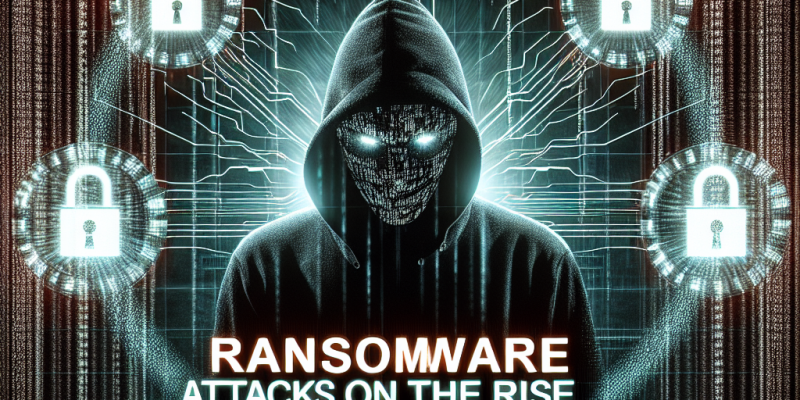Ransomware Attacks on the Rise: What You Need to Know

In recent years, ransomware attacks have surged to alarming levels, posing significant threats to businesses, governments, and individuals alike. The intricate details of these cyber-attacks underscore a pressing need for awareness, prevention, and effective response strategies.
Understanding Ransomware
Ransomware is a type of malicious software (malware) that encrypts files on a victim’s device or network, rendering data inaccessible. Once the files are locked, attackers typically demand a ransom in exchange for a decryption key. In many cases, victims are threatened with further data leaks or permanent deletion should they refuse to comply.
The Rising Trend of Ransomware Attacks
The frequency and sophistication of ransomware attacks have grown exponentially. According to the Cybersecurity and Infrastructure Security Agency (CISA), the number of reported ransomware incidents has steadily increased, especially during the COVID-19 pandemic when many organizations shifted to remote work. Cybercriminals have taken advantage of this shift, exploiting vulnerabilities in remote access and cloud services.
Notable incidents have made headlines, affecting major corporations, healthcare systems, and even public infrastructure. The Colonial Pipeline attack in May 2021 disrupted fuel supplies across the eastern United States, while the Kaseya incident compromised the software management tools of countless organizations worldwide.
Motivations Behind Ransomware Attacks
-
Financial Gain: The primary motivation for most ransomware attacks is financial. As organizations face pressure to restore operations quickly, many are willing to pay substantial ransoms to regain access to critical data.
-
Visibility and Fame: High-profile cases garner attention, which can enhance the status of cybercriminal groups in the underground economy. Notorious groups like REvil and DarkSide have achieved notoriety, prompting other hackers to emulate their tactics.
- Data Theft: Some attackers not only encrypt files but also exfiltrate sensitive data, threatening to expose it publicly if the ransom is not paid. This double extortion tactic further increases the pressure on victims.
Impacts of Ransomware Attacks
The repercussions of ransomware attacks can be devastating, impacting not just the targeted organization but also its clients and partners. Common consequences include:
-
Financial Losses: Ransom payouts can be astronomical, often reaching millions of dollars. However, the costs do not stop there; organizations face expenses related to recovery efforts, legal fees, and potential regulatory penalties.
-
Operational Disruption: Ransomware can halt business operations, resulting in lost productivity and potential loss of customers.
- Reputational Damage: The fallout from a ransomware attack can tarnish an organization’s reputation, particularly when sensitive data is compromised, leading to a loss of trust among stakeholders.
Prevention and Mitigation Strategies
With ransomware on the rise, organizations must adopt a proactive stance in their cybersecurity defenses. Here are several measures that can help mitigate the risk:
-
Regular Backups: Frequent and secure backups help ensure that data can be restored without succumbing to ransom demands. It’s essential to store backups offline or in a separate network to prevent them from being targeted.
-
Employee Training: Cybersecurity is only as strong as the weakest link. Regular training sessions that educate employees about phishing attacks and safe browsing habits can reduce the likelihood of an initial infection.
-
Software Updates: Keeping all software, operating systems, and applications updated can help close vulnerabilities that ransomware may exploit.
-
Incident Response Plan: Having a comprehensive incident response plan in place can help organizations respond quickly and effectively to minimize damage in the event of an attack.
-
Network Segmentation: Dividing networks into segments can limit the spread of ransomware throughout an organization, making containment easier.
- Employing Security Solutions: Implementing advanced security software that employs machine learning and behavioral analytics can add an additional layer of defense against ransomware threats.
The Road Ahead
As ransomware attacks continue to evolve, the battle between cybercriminals and defenders intensifies. Collective efforts among governments, law enforcement, cybersecurity professionals, and private organizations are crucial in combating this global threat.
One critical approach involves collaboration through information sharing and continuous monitoring of emerging threats. By staying informed and adopting best practices, organizations can fortify their defenses and reduce the likelihood of falling victim to a ransomware attack.
In conclusion, the rise of ransomware should serve as a wake-up call for all individuals and organizations. By understanding the nature of these attacks and implementing robust cybersecurity measures, we can work together to diminish their impact and protect our digital future.














